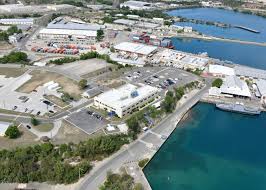Guantanamo Naval Base Accused of Soil Damage
By Daniel Benitez (Café Fuerte)

HAVANA TIMES — According to a Cuban scientist, the Guantanamo Naval Base, operating on territory which the United States has leased from Cuba since February of 1903, is responsible for secondary salinization processes that are affecting soils and preventing adequate draining in the region.
The Masters in Science Mario Montero claims that the military facility at the prison built in the area has caused environmental damage and is impeding the proper draining of water at the Guantanamo and Guaso river basins. This, according to his assessment, is having a negative impact on surrounding terrains.
During a provincial gathering dealing with anti-draught measures sponsored by the National Association of Architects and Construction Engineers and other government organizations, the issue of the Guantanamo Naval Base came up during a presentation by Montero, who was a member of Cuba’s delegation at the World Convention to Combat Desertification and Drought.
Crops Affected
The scientist added that the military facility represents an obstacle to Guantanamo’s economic and social development plans and suggested that the soils affected in the valley have a direct impact on food production for the city.
According to the report published by the local press, the base has also prevented Cuban experts from studying the transition of land and marine ecosystems located on the boundary between Cuban and US territory.
The environmental deterioration of the valley began, according to studies, when the facility started to be built and the indigenous vegetation was destroyed and the soil compacted, phenomena which were exacerbated by the exploitation of the sand reserves in Malabe, today part of the municipality of Niceto Perez.
The expert also complained that US military engineers wasted no time in the creation of shooting ranges, breakwaters and airports, all later expanded to the detriment of the environment and national sovereignty.
Usurped Territory

The 45 square miles occupied by the base have represented a disputed territory since January of 1959, as this land was considered by Fidel Castro’s government – and that of his brother – as an usurped territory, and the base as an illegitimate facility set up against the will of the Cuban people.
For the US government, Gitmo, as they call it, represents a fuel resupply point for vessels in the region and a first line of monitoring and air safety, for Washington and its allies.
The United States secured perpetual lease rights over this small portion of land located in the outer end of the Guantanamo Bay on February 23, 1903, through a treaty signed by the first Cuban president Tomas Estrada Palma.
With the thaw in relations that began on December 17 last year, the “return” of the territory occupied by the base and the end of the embargo have been at the center of discussions and demands made President Raul Castro. Both demands, however, have met with a wall of resistance put up by congress people and senators who refuse to yield to Cuban demands without anything in return.
This past Wednesday, US Secretary of Defense Ashton Carter declared that his country has no intentions of relinquishing this military enclave.






A sad, empty, senseless article without purpose. Please refer to some views of someone who lived, worked and was related to that infamous enclave since 1946.
http://www.havanatimes.org/?p=70844
http://www.havanatimes.org/?p=109497
http://www.havanatimes.org/?p=107463
http://www.havanatimes.org/?p=77249
http://www.havanatimes.org/?p=79584